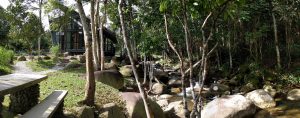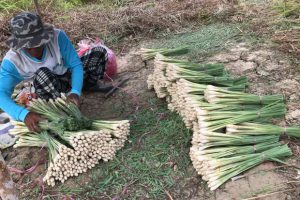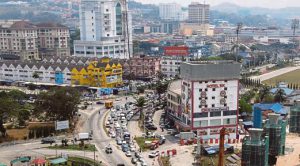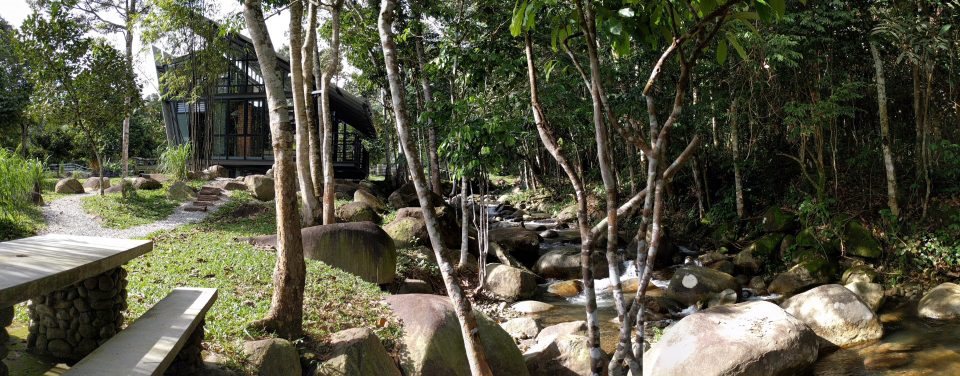
By Muhaimin Merican
If you look at the southeastern region of Selangor, you will notice a significantly large area known as the Hulu Langat district. The Hulu Langat district features some of the busiest towns in Selangor such as Cheras, Semenyih, Kajang and Bandar Baru Bangi.
The district is made up of seven mukim or subdistricts. The mukim, according to the 1965 National Land Code are Ampang, Beranang, Cheras, Ulu Langat, Ulu Semenyih, Semenyih, and Kajang.
Measuring 840 sq kilometres in size and with a population of 1,141,880, Hulu Langat is the fifth largest district in the state. It has a blend of urban and country residences with a more significant part of the populace settling in towns close to Kuala Lumpur. The district’s local governance is split into two and managed by the Ampang Jaya Municipal Council, as well as the Kajang Municipal Council.
Rich History
 According to an old folks’ tale, Hulu Langat is named after an insect known as ‘Langat’ that was said to infest the district before it was opened as villages and towns in the area. Alternatively, the name may come from the name of a fish, Selangat, which lives both in saltwater and freshwater.
According to an old folks’ tale, Hulu Langat is named after an insect known as ‘Langat’ that was said to infest the district before it was opened as villages and towns in the area. Alternatively, the name may come from the name of a fish, Selangat, which lives both in saltwater and freshwater.
Hulu means deep within or upstream and based on the location of the region in the heart of Selangor, it became popular as Hulu Langat.
Originally a part of Negeri Sembilan, the Hulu Langat district was traded for the Lukut District in 1880.
According to J.M. Gullick, based on 19th century sources, the Orang Asli of the Sakai tribe had long settled the Langat valley but Malay influence was evident as they are recorded to have been fluent speakers of Malay. Hulu Langat was then a village at the top end of the valley. Early residents of Hulu Langat were small pockets of Javan and Sumatrans living in settlements along the Langat River.
In 1855, the small town of Rekoh was known for the tin mining activities in the area. In 1868, the then-Sultan of Selangor, Sultan Abdul Samad, invited a Chinese tycoon, Chin Ah Chan, to open tin mines in Bukit Arang and this was the first two major mining town in the district.
Hulu Langat and its community saw one of the worst fates during the communist insurgency of Malaya in the 1940s and 1950s. Towns such as Kajang, Bangi, and Balakong were severely affected by the communist movement with Semenyih being the worst hit with villages and plantations were set on fire as a sign of resistance to the British rule at the time.
The repercussions of the communist insurgency resulted in the British forces relocating the densely populated villages and towns in the Hulu Langat district into the newly-created villages away from the communist hotspots.
The Malayan Emergency ended in 1960 and life resumed in the Hulu Langat district albeit it would never be the same due to the heavy casualties and restructuring it had faced in the 12 years during the Emergency period.
By the 1980s, Kajang expanded extensively as more of the population moved there because of the expensive housing costs and shortage of residential area in Kuala Lumpur and PetalingJaya. Housing demand rose in the 1990s and this was when property developers came to Kajang, buying up old rubber plantations and converting them into residential areas.
Today, Hulu Langat district is home to more than 1 million people. The Hulu Langat district is also home to multiple urban and developing settlements that have brought economic value as well as population growth into the district.
The District and its Economic Activities
According to Majlis Perbandaran Kajang, in 2015, the Kajang sub-district itself made a total of RM 93.4 million. Moreover, the district has  allocated almost 3000 hectares of land for the industrial needs of the district. In addition, the district also allocates over 500 hectares for business and services in the area.
allocated almost 3000 hectares of land for the industrial needs of the district. In addition, the district also allocates over 500 hectares for business and services in the area.
The Municipal Council also declared a total of almost 280,000 units of holdings it had from the sub-districts under its administration. The holdings were parts of enterprises, businesses and homes as well as select properties.
The district features various types of economic activities that help boost the district’s economy. The district features multiple industrial areas that house factories and warehouses that produce materials and products that are sent throughout the nation.
The district is also famous for its agricultural farming. The farming industry in the district can be found in mukim such as Beranang, where the development have not disrupted the peace of nature. The most popular agricultural product hailing from the district is it’s distinctive lemongrass or known as serai in Bahasa Malaysia. Formerly growing rice here, farmers have shifted to lemongrass due to the drainage system in the area. Their daily yields, which reach up to five tonnes, are snapped up by wholesale markets, factories and restaurants in the Klang Valley, as well as in Negeri Sembilan, Melaka and even as far as Johor.
The Growth of Hulu Langat

From a small village by a river in the 19th century, and a high-risk area during the Malayan emergency in the ‘60s, Hulu Langat has grown tremendously. It has been able to recover from one of the darkest periods in Malaysian history to become one of the most densely populated districts in Selangor. However, since it neighbours the densely-populated areas of Kuala Lumpur and Petaling Jaya, Hulu Langat is predicted to experience favourable growth both economically as well as population-wise as Malaysia heads into the next decade.





